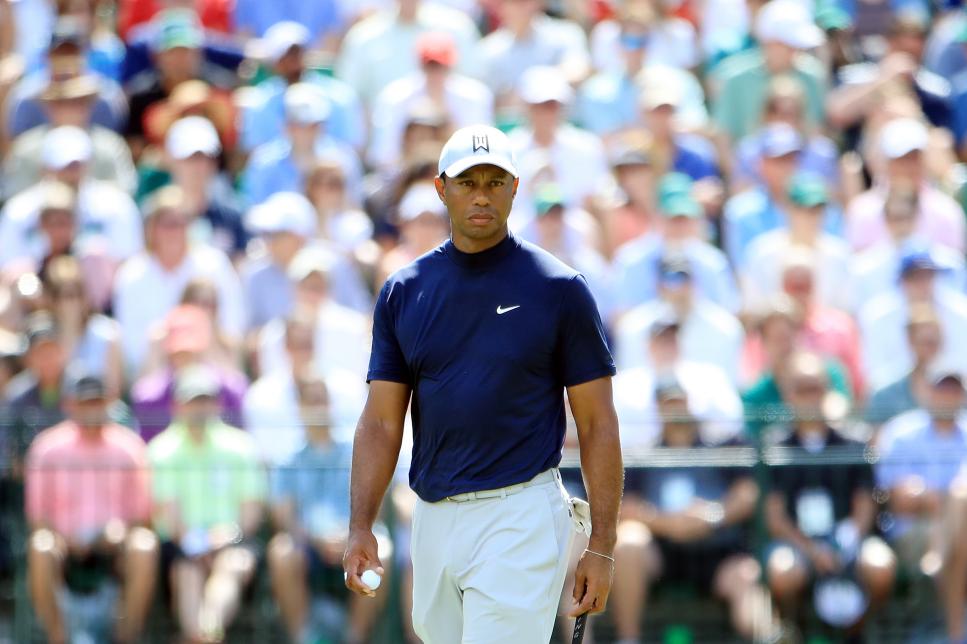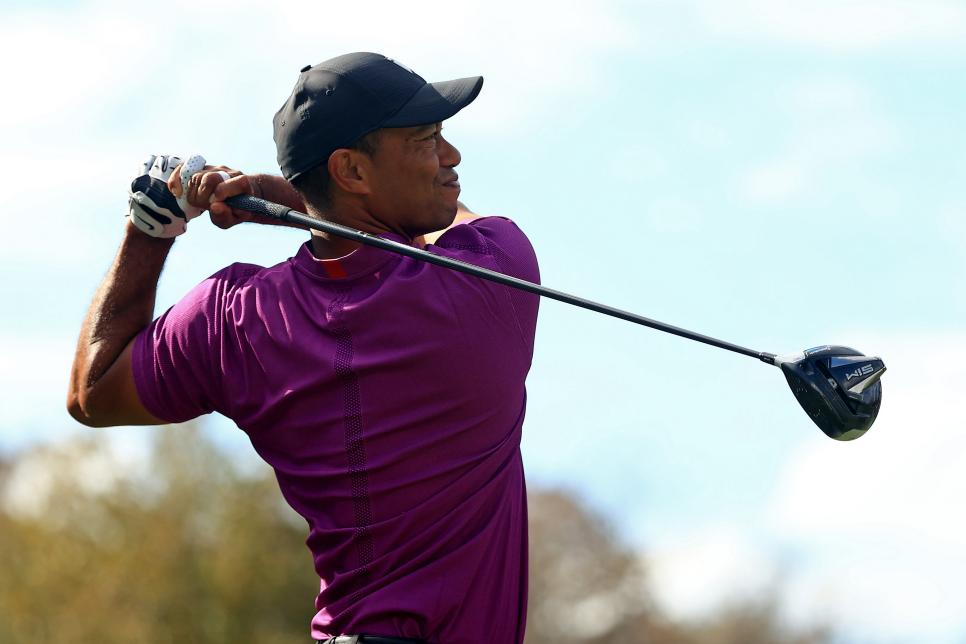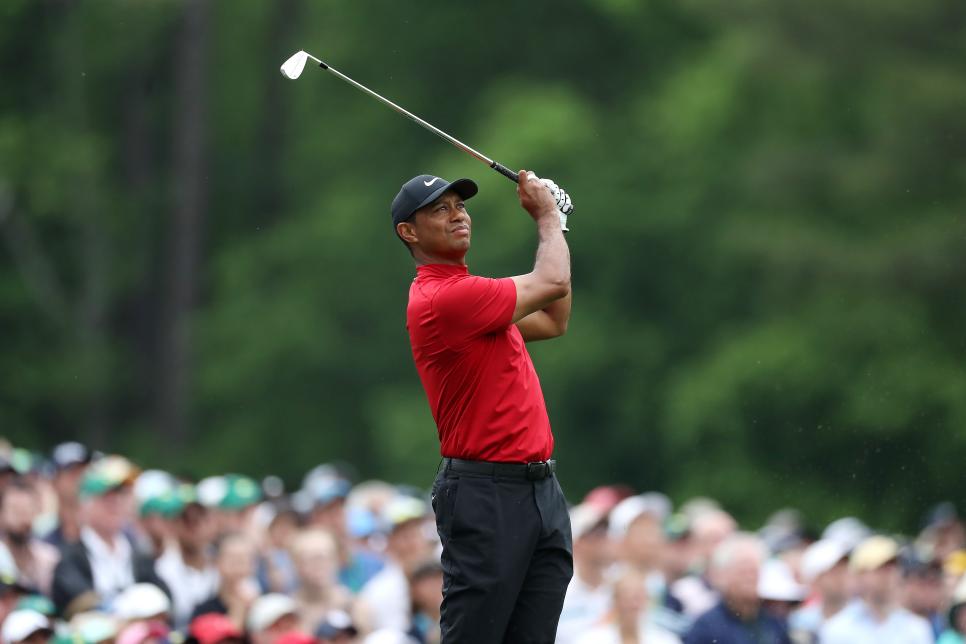Tiger Woods
'Waiting. Hoping. Praying.' What's next for Tiger Woods on the road to recovery

What’s next? It is a question Tiger Woods has faced countless times over the past decade. It is a question that tackles a different beast today.
As the shock of Woods' devastating car accident transitions to the reality of his circumstance, it's apparent Woods faces an arduous road to recovery. But a number of medical experts agree it is a road not without hope.
Woods underwent emergency surgery at Harbor-UCLA Medical Center on Tuesday following a single-car accident in Los Angeles that left him with significant orthopaedic injuries. “Comminuted open fractures affecting both the upper and lower portions of the tibia and fibula bones were stabilized by inserting a rod into the tibia,” Anish Mahajan, chief medical officer and interim CEO at Harbor-UCLA Medical Center, said in a statement. “Additional injuries to the bones of the foot and ankle were stabilized with a combination of screws and pins. Trauma to the muscle and soft-tissue of the leg required surgical release of the covering of the muscles to relieve pressure due to swelling.”
The most important part of this question has already been answered—that there’s even a “next” to discuss. Los Angeles County sheriff Alex Villanueva noted Woods is “very fortunate to come out of this alive” after the crash, with Woods’ team issuing a statement Tuesday night that the golfer was “awake, responsive and recovering” following surgery. Still, it’s natural to wonder what lies ahead in recovery for Woods, and that requires an understanding of what Woods has endured and what he will battle.
Dr. Ara Suppiah is one of the world’s most trusted medical pioneers in professional sports and a sought-after physician among PGA Tour players. According to Dr. Suppiah, there are several key components in the statement released by Harbor-UCLA, the first of which is the comminuted fractures of both the upper and lower portions of the tibia and fibula. The tibia and fibula are two long bones in the lower leg; the tibia is the larger of the two that sits on the inside of the leg and is the primary weight-bearing structure, while the fibula reinforces the tibia and helps supports muscles in the ankle and lower leg. Essentially, the statement signifies Tiger had breaks at the knee and the ankle.
“When you have a clean break, like a twig snapping, that’s a straight fracture,” Dr. Suppiah said. “This was a comminuted fracture, which is like an eggshell crumbling.”
The second vital point concerns open fractures. Also referred to as “compounded fractures,” this is a fracture that has produced an open wound or puncture of the skin. Compound fractures have a higher rate of infection than fractures that stayed under the surface, which requires a process called “irrigation,” during which a medical team surgically cleans the bone and puncture site. A compound fracture calls for careful monitoring over the ensuing days, weeks and months to ensure an infection has been repelled, for infections can lead to serious complications, including amputation.
The rod, which is metal and a foot long, is used to keep everything in one place. There are nails and pins to provide further balance. This is done to help offload the stress placed on the bone. The initial process is allowing the bone to stabilize, and even though it’s a compound fracture, long bones tend to do better when it comes time for rehab.
Drastic as this sounds, Suppiah says the situation and procedures are not unusual. “My line of work has involved seeing lots of trauma,” he said. “Not to minimize what Woods experienced, but there are many people around the world having the same type of injuries. It is especially common in motorcycle accidents.” Still, given the severity of the fractures, it will likely take up to three months for those fractures to heal.
Unfortunately for Woods, the fractures aren’t the only matters requiring attention. As noted by UCLA, there was a surgical release of the covering of the muscles, a procedure also known as a fasciotomy. “The muscles start to swell. They get under enormous pressure,” Dr. Suppiah said. “They can start to bleed. It can be very painful.” The fasciotomy allows for the muscle tissue to “breathe again,” restoring blood circulation and decreasing said pressure. However, the fasciotomy in itself requires its own convalescence, and once Woods is able to walk there will be observation to make sure the swelling doesn’t return. It is not necessarily a road block but a speed bump that will have to be accounted for.
“There’s muscle damage,” Dr. Suppiah says. “Those things themselves need to heal while bone is healing.”

Mike Ehrmann
Complicating matters are injuries to the ankle and foot. Before any sort of recovery can begin they need to be fully repaired, and injuries of this nature mean the foot has lost mobility, to say nothing of the ability to transfer and absorb weight. As much attention as Woods’ leg is getting, Dr. Suppiah and Alex Shafiro—an orthopedic specialist who treats sports medicine injuries at New York’s Hospital for Special Surgery—agree this is potentially the bigger problem.
“Because of the inherent forces the foot and ankle have to go through—having to be both flexible and mobile, while also incredibly stiff and load-bearing—rehab is difficult and very slow early on,” Shafiro says. “And if it’s not allowed to heal fully you’re looking at an ankle that doesn’t rotate or bear load well, or could potentially need further surgery like fusion later on, because of joint breakdown.
“If he can’t get the motion from the foot, the knee, hip and back are going to be overloaded. Those three proximal components, if they’re not working together, will cause disruption in the kinetic chain, and if you’re generating or dissipating power inefficiently from somewhere else because of compensation other problems can arise.”
Combined, these elements likely mean four to six weeks of almost no movement for Woods. He will likely be laying down, with minimal exercises not to begin for months. He will be fit into some sort of cast or an external fixator to keep him in place. The focus will be on the ingrowth of the bone into the hardware and their healing. Patience is a must; if the process is rushed, the results can be devastating, leading to Woods’ gait being forever altered, or worse, further surgery.
“This will require a long period of being immobile,” Dr. Suppiah says. “We can’t use weeks; we are looking at months before we can talk about starting to get better. Everything needs to be set just right.”
If there are no setbacks, the physical rehabilitation can begin around three months. Woods’ age (45) and injury-riddled past may pose as concerns, although Dr. Suppiah and Dr. Bill Mallon—a former PGA Tour player turned orthopedic surgeon—don’t think they will present a hurdle. “Tiger is young orthopaedically and has always been in superb condition. That is in his favor,” said Dr. Mallon. “He is old for a PGA Tour player, but not medically. I think his prior injuries are not a factor here.” Echoes Dr. Suppiah: “He has no autoimmune issues that we are aware of. He also recovered from all previous surgeries. No reason to believe that the past would interfere with a full recovery.”
What constitutes a full recovery is a different story.

David Cannon
What remains unknown is the health of Woods’ back. He underwent his fifth back operation in December and was scheduled to receive an MRI this week. Woods’ team has not released information about how his back was impacted by the crash, and attempting to make any proclamations requires conjecture and speculation. Conversely, Dr. Suppiah said that in most vehicle accidents like Woods’, there are going to be major strains put on the back.
“It’s rare that those involved in these situations don’t suffer from stiffness,” Dr. Suppiah said. “There’s a tremendous amount of torque in roll-over incidents.” Unlike the knee injuries, Tiger’s past back problems could be a factor.
The back is far from trivial during the rehab process for this situation, said Shafiro. At some point (if he hasn’t already) Woods will have imaging done to see if anything has been structurally affected. A patient will likely have two teams of physicians—one focused on the lower extremities, the other on the spine—and the teams have to be in communication for what type of load the patient can handle. Because a patient is mostly without exercise for two months a portion of the rehab is focused on strengthening the core. An aggravation to an existing or previous back ailment amplifies these concerns and could delay rehabilitation.
“These type of injuries on the back compound,” Dr. Suppiah said. “They are going to bring their own set of limitations. It is reasonable that scar tissue was disrupted. To think the back wasn’t affected is wishful thinking.”
It should be noted these concerns are not universal. In multiple interviews, Dr. Mallon has tried to quell worries about Woods, asserting his belief the 15-time major winner will eventually be able to resume his normal activities. “Can Tiger play golf again and if so, how long? From these injuries I suspect the answer is yes, he can play golf again,” Dr. Mallon said. In that same breath, Dr. Mallon also tried to establish reasonable expectations. “Getting back to 100 percent is very rare unless you’re in your teens or early 20s,” he said.
Dr. Suppiah’s understanding of “normal” differs. He preaches caution. He knows what Woods has experienced. He has seen what he has endured. That is no guarantee of the future. “People come back from these injuries, yes. Will he be able to hit a golf ball again? No doubt,” Dr. Suppiah said. “But if you’re asking who on tour has come back from this specific trauma, the answer is there are none.”
Shafiro notes that in rehab you think of the desired end and then begin working backwards in your timeline to see if and when it’s attainable. You also have to know where you’re starting from. For those seeking a more immediate What’s next? for Tiger Woods, Shafiro offers a blunt truth.
“He’s got nothing for two months,” he said. “You’re just waiting, hoping, praying, healing.”
• • •
Our Daniel Rapaport provides an update on what we know about Tiger Woods' accident and his condition in the video below: